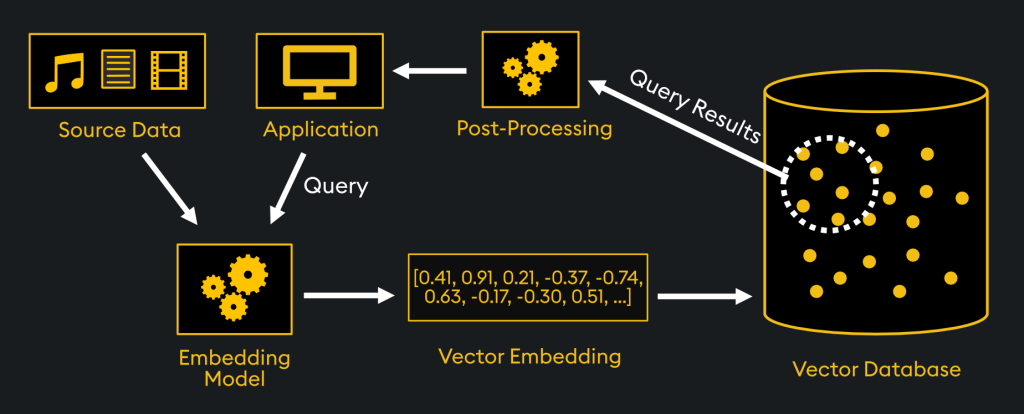
In today’s data-rich landscape, search is no longer just about retrieving exact matches from rows and tables. Users expect answers, not just results, and enterprises need smarter systems that understand context, semantics, and intent. Enter vector databases, the underlying engine behind a new generation of intelligent search.
From Keyword Matching to Semantic Understanding
Traditional search engines operate on keyword indexing. They work well for structured data and known queries, but struggle with natural language and unstructured content. That’s a problem when your business runs on a mix of documents, emails, support tickets, and media files all in different formats and contexts.
Vector databases approach search differently. Instead of matching words, they match meanings. They convert text, images, audio, or code into dense vector embeddings, high-dimensional representations of content that capture semantic relationships. Two pieces of content that mean the same thing, even if worded differently, will have similar vectors.
Why Vector Databases Matter to Enterprises
- Smarter Enterprise Search
Employees often spend hours looking for the right file, document, or insight. With vector search, you can ask a question like “Show me last year’s sales forecasts for North America” and retrieve the correct documents, even if those exact words were never used. - AI-Powered Assistants
Whether it’s a chatbot for HR queries or a customer support agent, vector databases allow AI systems to pull accurate and relevant information from internal knowledge bases, improving response quality and reducing human workload. - Multimodal Search
Enterprises increasingly deal with images, video, audio, and code. Vector databases unify search across these formats, enabling a designer to search for similar images or a developer to find code snippets based on functionality. - Real-Time Personalization
Vector-based systems power recommendations by finding items “close” in meaning to a user’s interests, not just similar tags or categories. This is already being used in dynamic content delivery and enterprise learning platforms. - Speed at Scale
Built for large-scale indexing and high-dimensional querying, modern vector databases like Pinecone, Weaviate, Milvus, or FAISS offer millisecond response times even with millions of records.
Use Cases Across Industries
- Legal: Search case law and contracts using semantic similarity
- Healthcare: Match patient symptoms with similar historical records
- Finance: Retrieve compliance reports or regulatory guidance contextually
- Retail: Power visual search for product discovery
- Tech: Improve code search and debugging with embeddings of codebases
Challenges to Consider
- Data Governance: Storing sensitive data as embeddings still requires strict access control and compliance frameworks.
- Embedding Quality: The performance of vector search depends heavily on the quality of the embedding models used (e.g., OpenAI, Cohere, Sentence-BERT).
- Indexing Cost: High-dimensional indexing requires specialized infrastructure and tuning to ensure performance doesn’t degrade over time.
The Future of Search Is Neural
As enterprises embrace AI-native systems, vector databases will become foundational. They are not just improving search. They are transforming how we interact with knowledge. Instead of typing keywords, users will converse with their data: asking, refining, and exploring in natural language, across modalities, at scale.

Leave a Reply